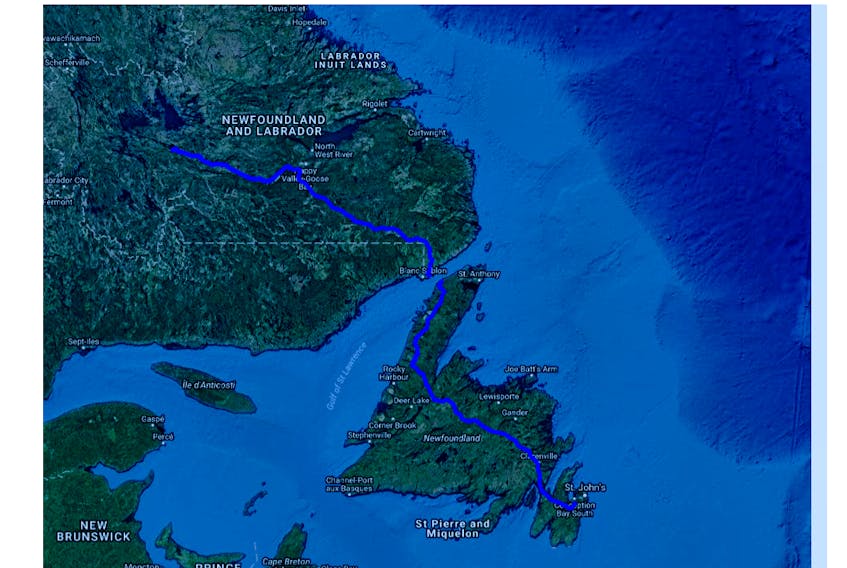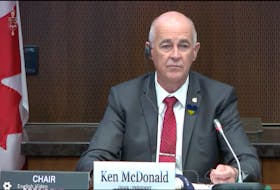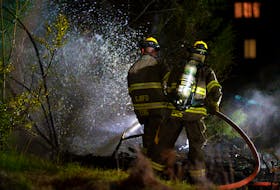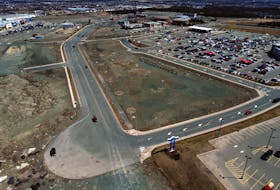At Pure Labrador in Forteau, fruit spreads and syrups are "made with the freshest, juiciest wild berries, hand-picked in the pristine Labrador barrens," including the prized cloudberry - the bakeapple.
Having been told businesses reliant on bakeapples were coming out in opposition to the Lower Churchill transmission line, The Telegram contacted Pure Labrador's Bradley Hancock. He said he isn't too concerned with the project plans at this point.
"It probably would affect a very small area of the actual berry barrens that we would use," he said Wednesday.
Yet Hancock has been following the project's development, in part to see herbicides are kept clear of his main berry supply.
The cleared right-of-way for Nalcor Energy's transmission line is planned at about 60 metres wide. Vegetation along the corridor will be controlled "through a combination of herbicide application and manual cutting," according to project documents.
Meanwhile, Hancock said he hopes to capitalize on some of the construction activity over the next couple of years, at his grocery store, restaurant and accommodations in the Forteau area.
In St. Lunaire-Griquet, far from the transmission line corridor, Steve Knudsen is kept busy running the Dark Tickle Co.
At its home base, the company offers educational experiences, allowing tourists to see jams and other preserves being made, before they are shipped off to stores and craft shops for sale.
The company uses wild, Newfoundland and Labrador berries in its creations - some potentially from areas along the proposed transmission line path, Knudsen said.
Like Hancock, he expressed no objections to the development, but said he would like to know more on the herbicide use.
"It's going to be something I guess we all need more information on," he said.
°°°
MHA for Cartwright-L'Anse au Clair, Yvonne Jones has been hearing from constituents on the line and link project, with herbicides just one topic of discussion.
"In a rural industry like mine, any industry plays a significant role," she stated in a letter to the Department of Environment. The department is responsible for the ongoing environmental assessment of the project.
Roads are a concern, Jones has said. Power rates on isolated systems are a concern. The ferry service across the Strait is operating at maximum already, so it needs to be reviewed.
Jones is calling for a new port in Southern Labrador, allowing for both ferry traffic and industrial use. It would, she told The Telegram, mean long-term benefits for the region.
Garbage and industrial waste from the project work must be considered, she said.
Yet the fishery in the Strait of Belle Isle, particularly the scallop fishery, is a top concern.
In scallop fishing, heavy draggers - "rakes" - are towed along the seabed. They have the potential to snag the proposed underwater power cables, if any part of the cable is left without proper protection.
During construction, some scallop beds in the Strait will become off-limits, Jones said, as subsea work is completed and the underwater cables are laid. Three cables are to be set down 150 metres apart, each protected by a "rock berm" 8 to 12 metres wide and between 0.8 metres and 1.5 metres high.
"There's not going to be a lot of ability to drag in the Strait of Belle Isle," Jones predicted, "so therefore (fishermen) are going to be restricted in where they can fish, therefore their catch rates are going to be restricted."
During public consultations, fishermen in the area have said only 12-14 area vessels are actively involved in the scallop fishery.
"In fairness to (Nalcor), the number of people that actually do fish (scallop) has decreased," Jones said, "but it doesn't change the fact that it's still an active commercial fishery in that area."
She wants compensation in place for scallop fishermen if there are losses resulting from transmission line construction.
Similarly, she said, a compensation plan should be put in place for fish plant workers, should they face lower catches post-construction.
In its formal environmental impact statement, Nalcor stated in summary any environmental effects "are not likely to be significant."









